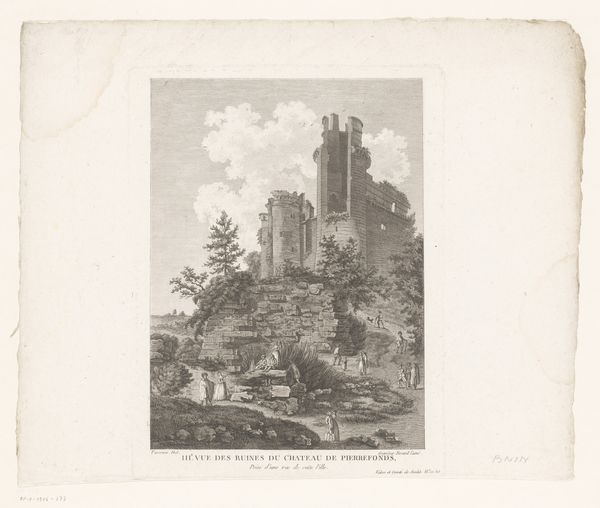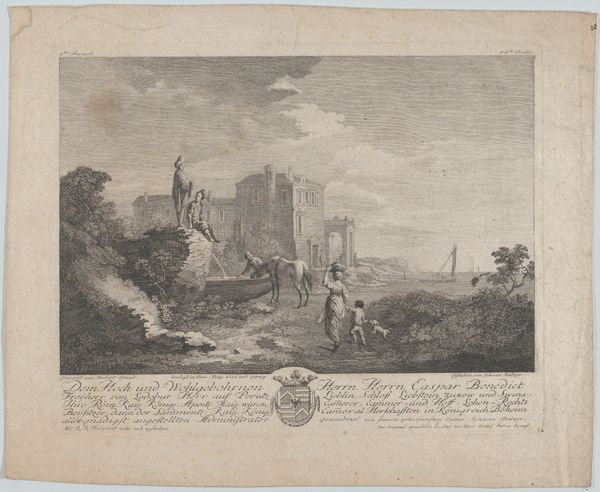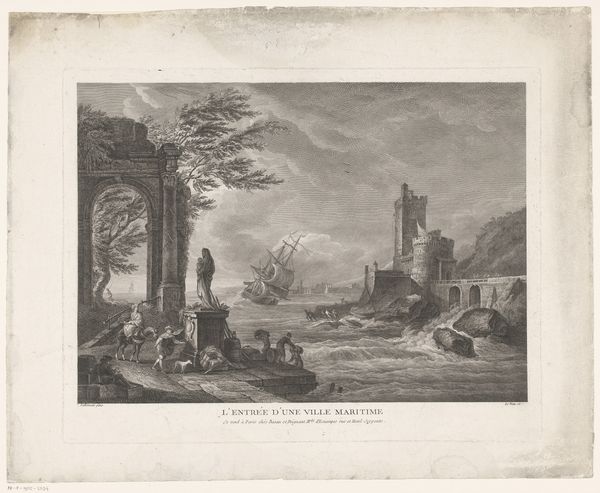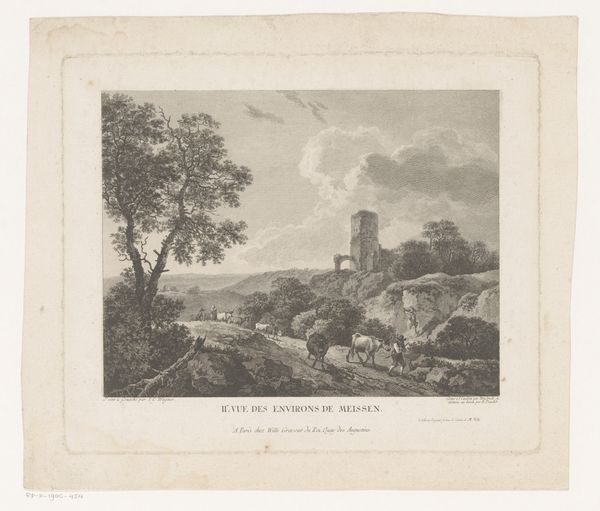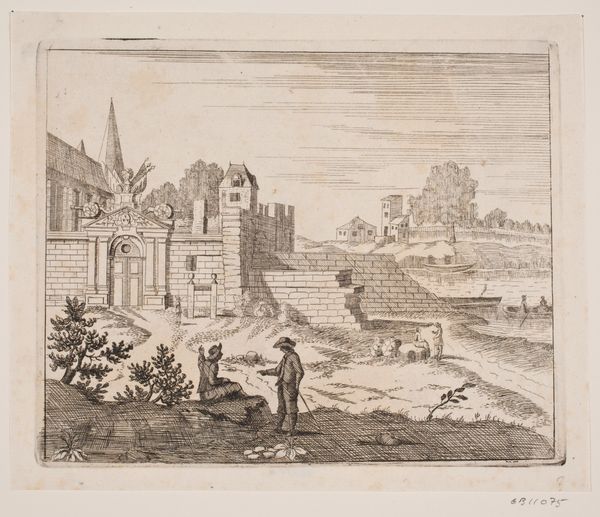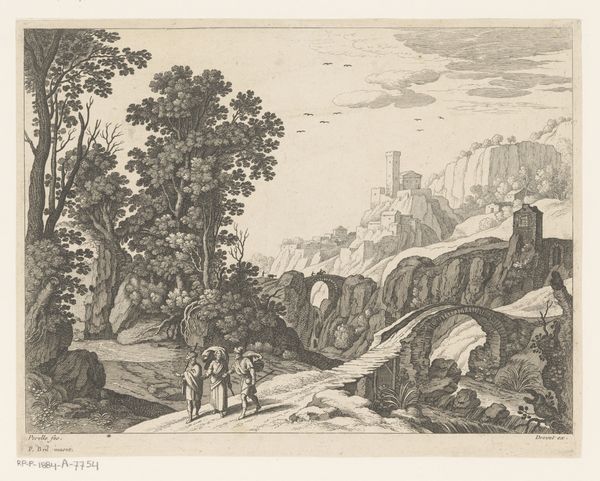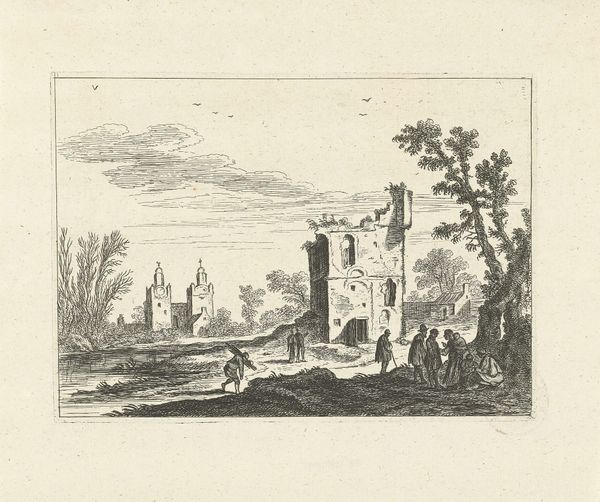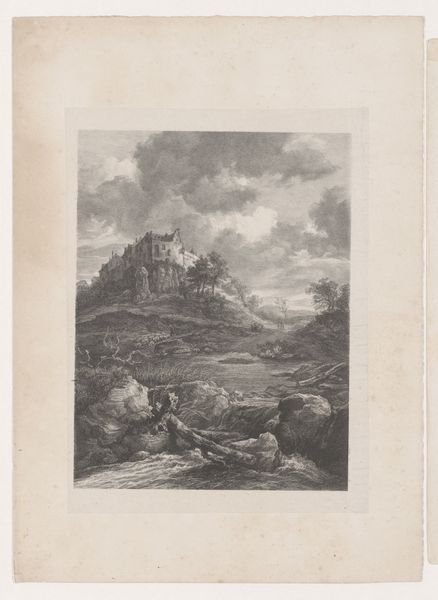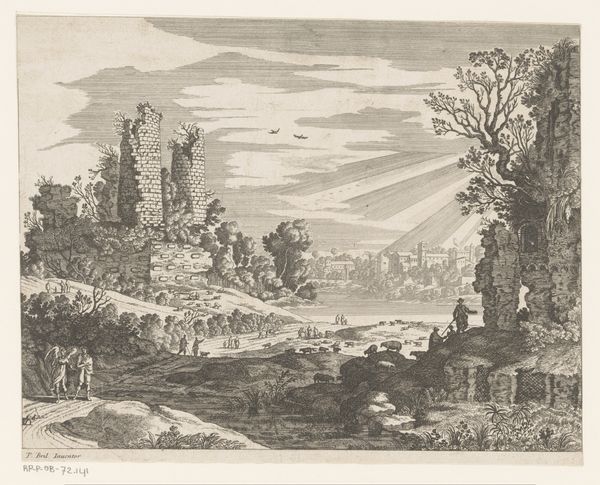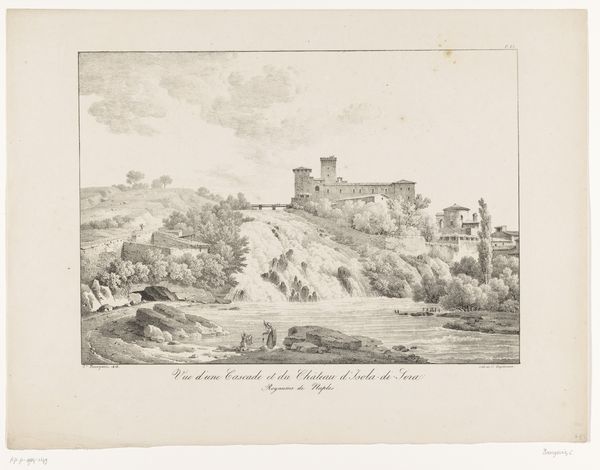
print, engraving
#
pencil drawn
# print
#
landscape
#
romanticism
#
cityscape
#
history-painting
#
engraving
Dimensions: height 195 mm, width 225 mm
Copyright: Rijks Museum: Open Domain
Here we see J.L.L.C. Zentner's etching, a landscape punctuated by a ruined castle, a haunting symbol of time's relentless march. The ruin, once a proud edifice, speaks of lost grandeur, echoing motifs found in Piranesi's etchings of Roman ruins. But Zentner infuses this symbol with a melancholic intimacy, moving from the grand to the personal. We find this motif across centuries, like the crumbling walls in Caspar David Friedrich's landscapes, each whispering tales of human ambition humbled by nature and time. Consider the psychological weight of ruins. They remind us of mortality, of the inevitable decay that awaits all human creations. Yet, they also hint at resilience, at the stories that linger amidst the stones. They represent a collective memory, a subconscious awareness of cycles of destruction and rebirth. The ruin is not merely a backdrop; it is an active participant in the human drama, ever changing, constantly resurfacing in the collective consciousness.
Comments
No comments
Be the first to comment and join the conversation on the ultimate creative platform.

